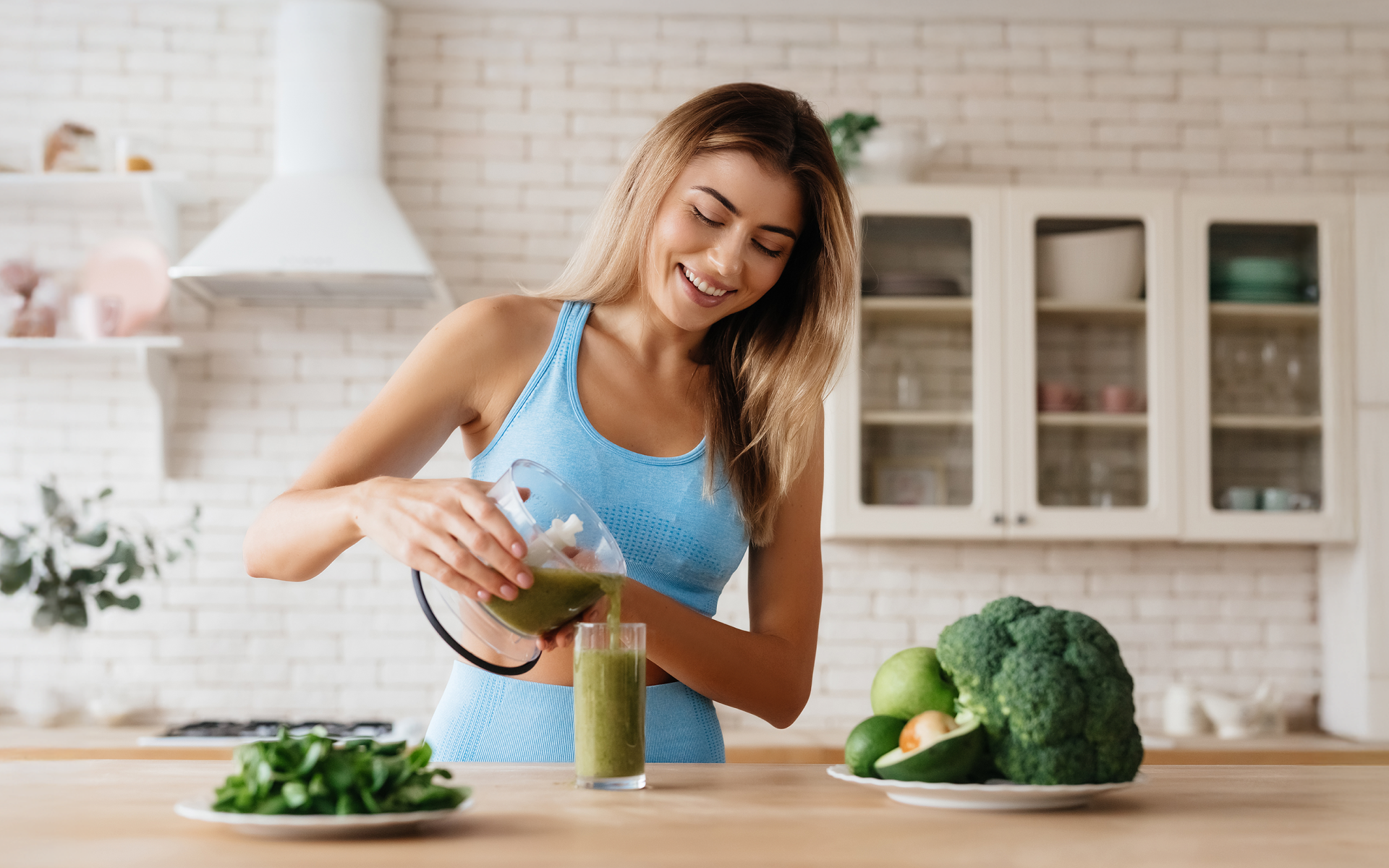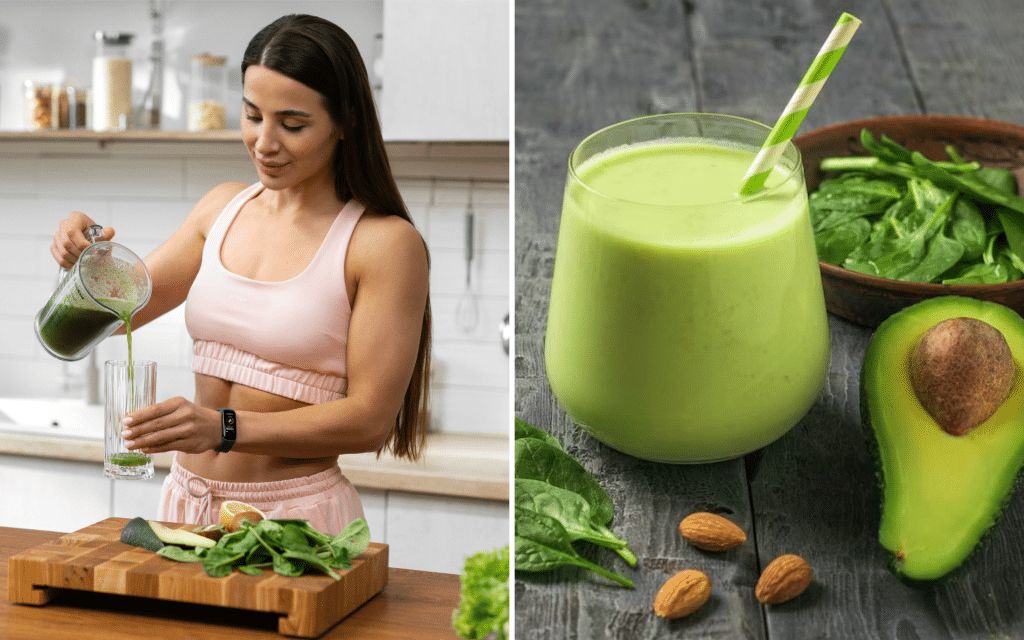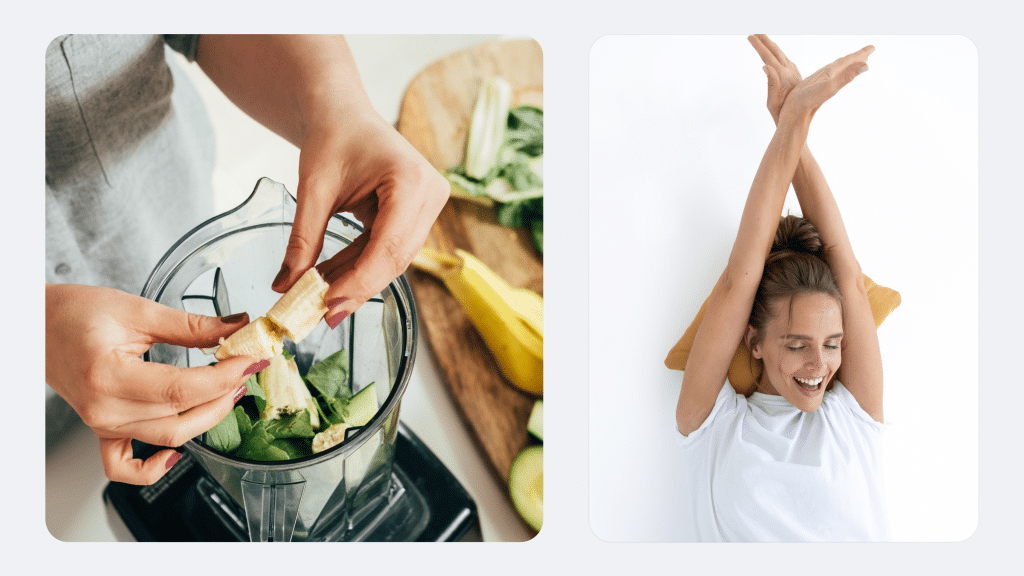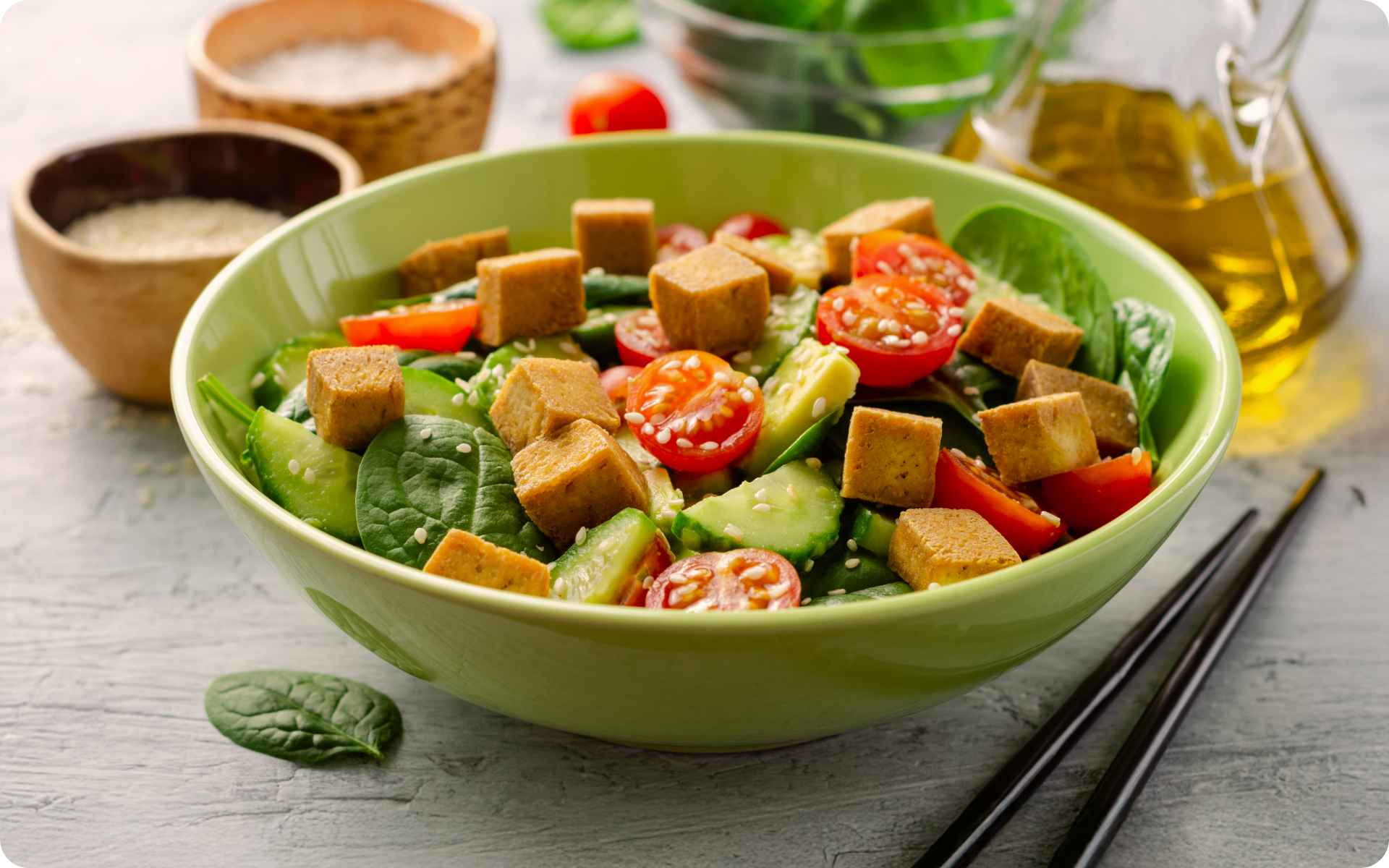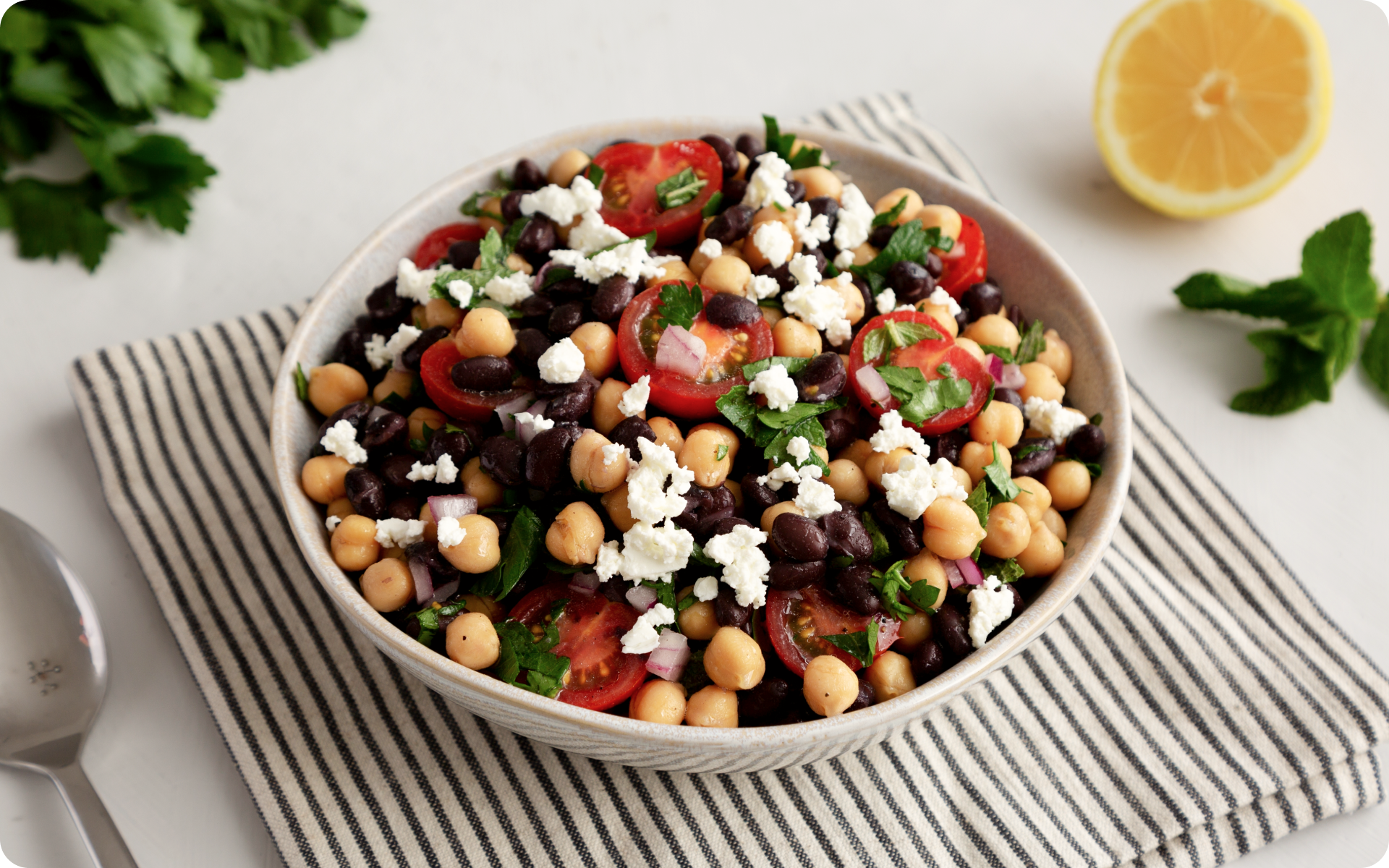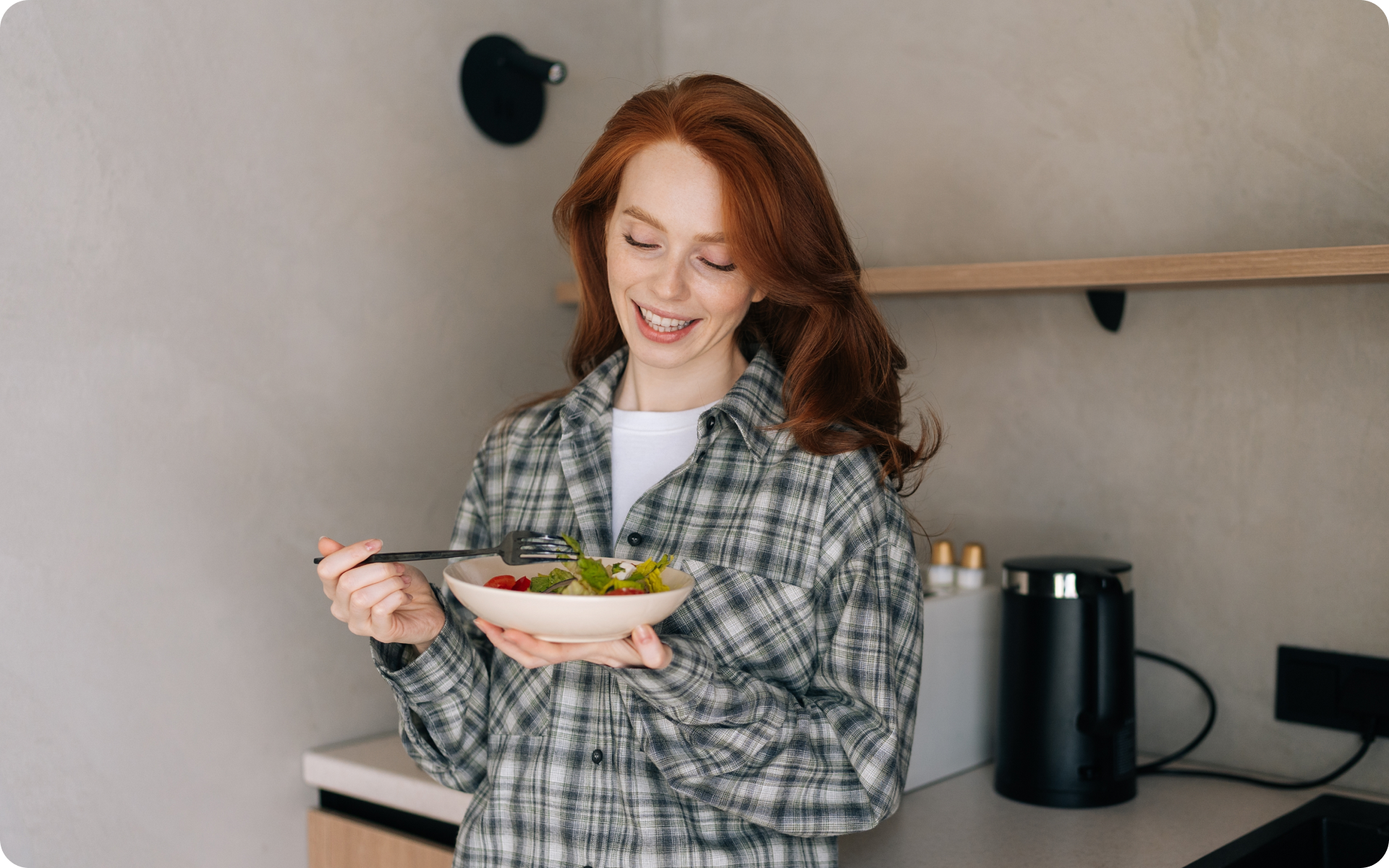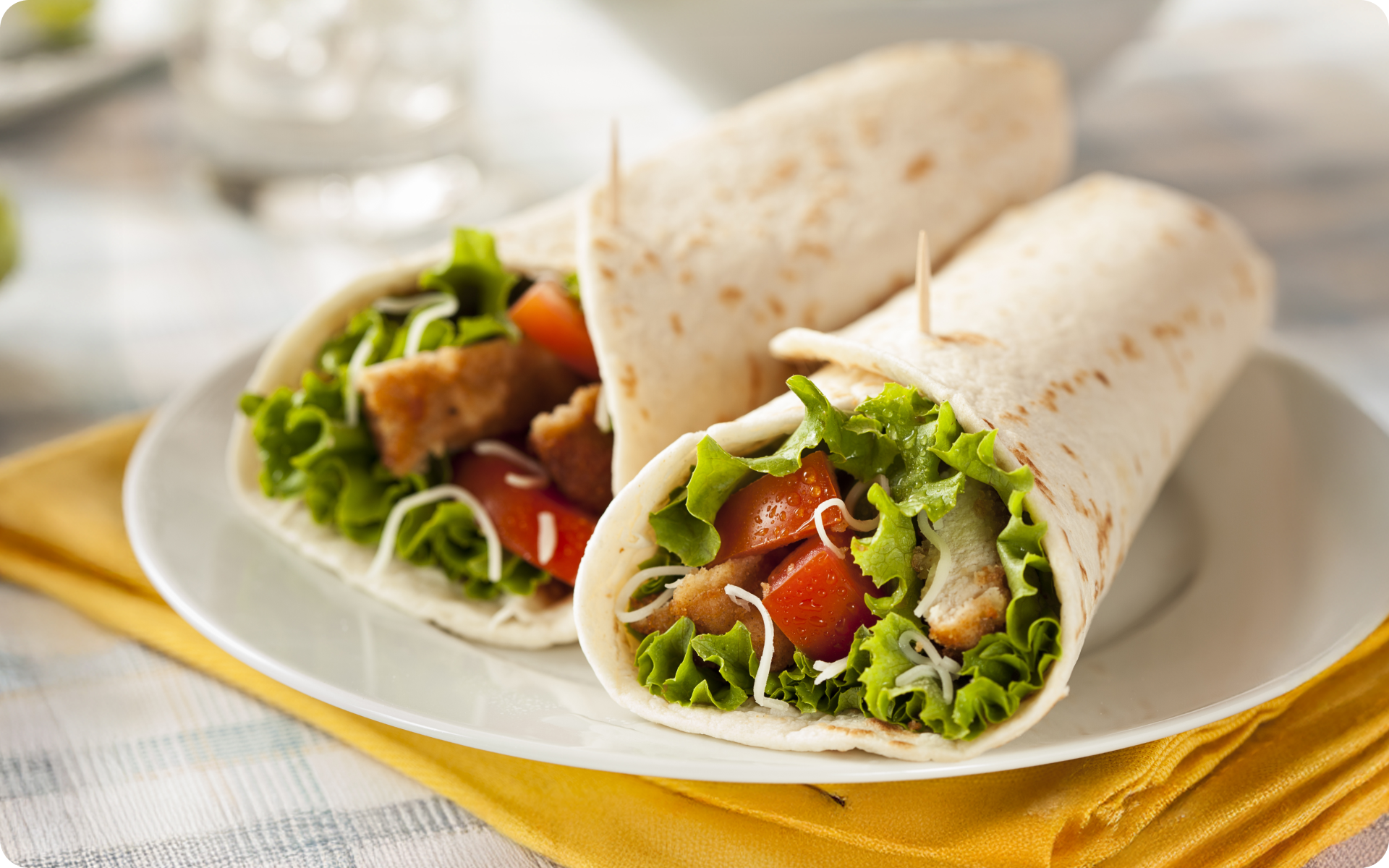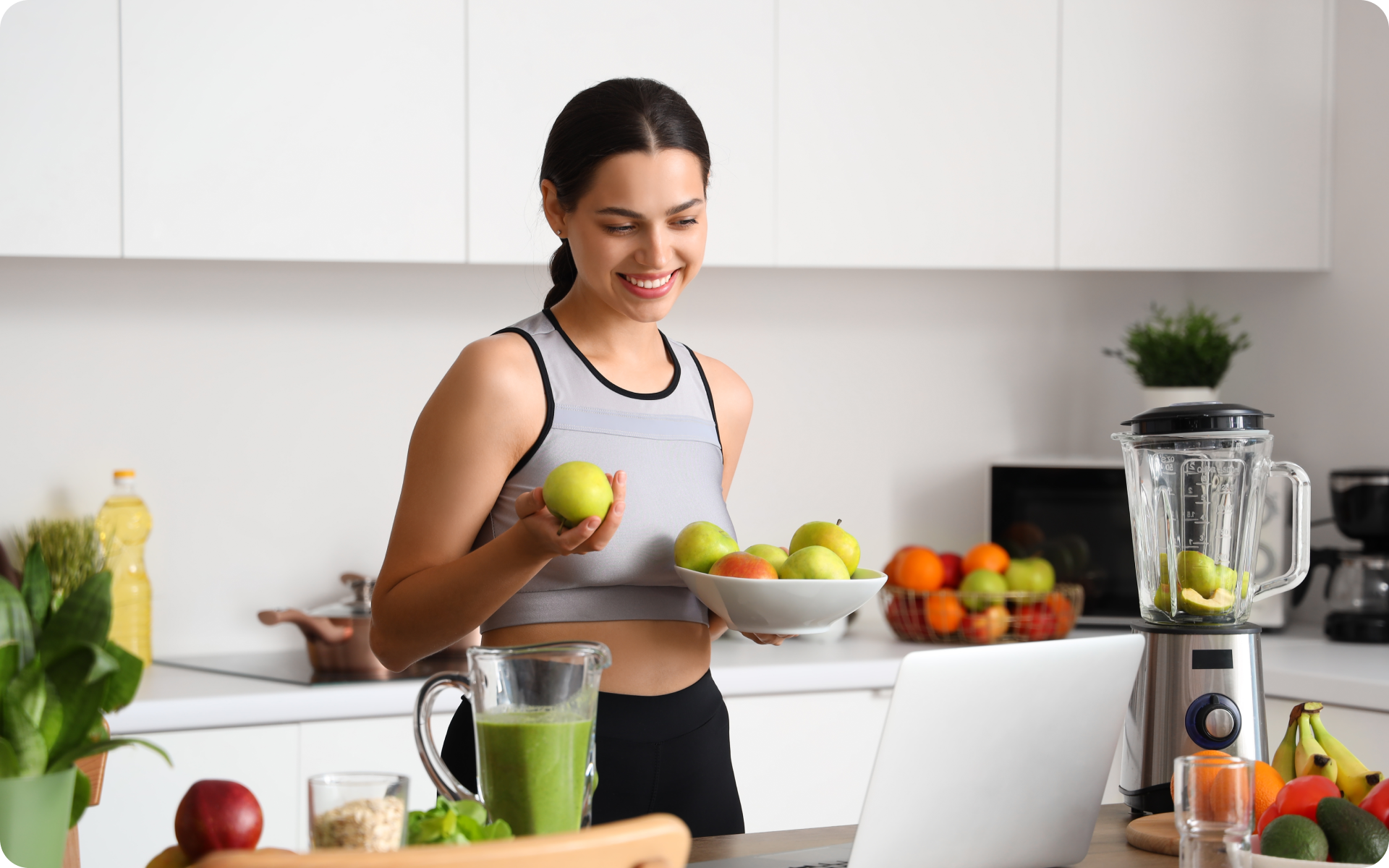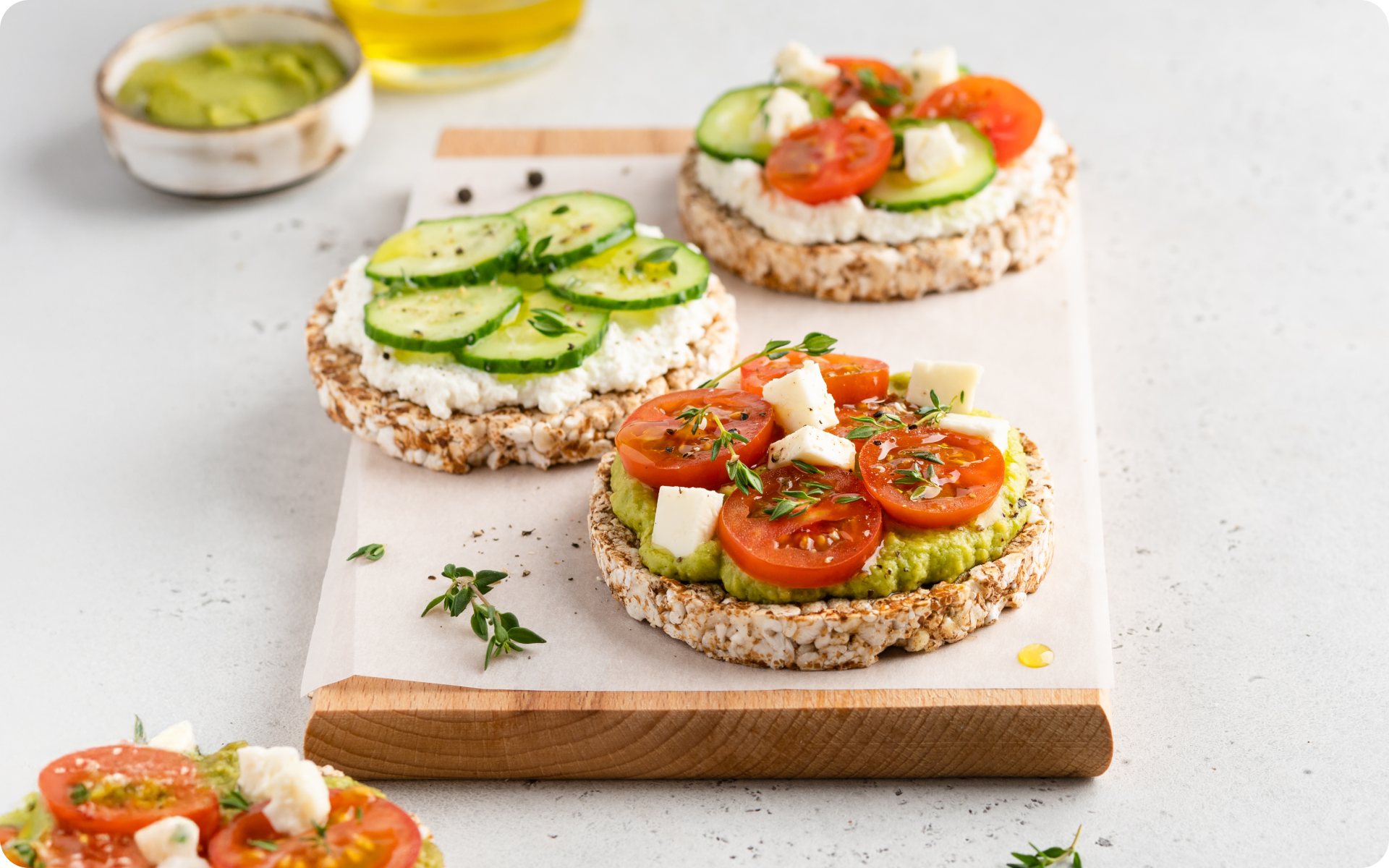We’re exposed to various pollutants and chemicals on a daily basis through the air we breathe, the foods we eat, and the products we use. Our bodies are well equipped to get rid of these toxins through our liver, kidneys, skin, and other detoxification organs.
However, we don’t always supply these organs with the necessary nutrients and care they need to function optimally. This can lead to symptoms such as fatigue, sluggishness, skin problems, and even chronic diseases.
A smoothie detox plan is a great way to jumpstart your body’s natural detoxification process and give your organs the support they need.
Here’s what you need to know before starting a 3-day smoothie detox plan for better health.
What Is a Smoothie Detox Plan?
A smoothie detox, also known as a juice cleanse or green smoothie cleanse, is a short-term diet plan that involves consuming fruit and vegetable-based smoothies for a set period of time. The idea behind a smoothie detox is to give your body a break from processed and unhealthy foods, while flooding it with essential vitamins, minerals, and antioxidants.
There’s no one way to do a smoothie detox, as it can vary in duration, ingredients, and intensity. Some people may opt for a one-day cleanse, while others may follow a more prolonged plan of up to 10 days. The key is to find what works best for your body and lifestyle.
What a Smoothie Detox Plan Isn’t
A smoothie detox isn’t a quick fix for weight loss or a replacement for a healthy and balanced diet. While you may experience weight loss during the detox, this is mainly due to the loss of water weight, not fat loss.
Similarly, a smoothie detox shouldn’t be used as an excuse to binge on unhealthy foods afterward. It’s essential to view it as a way to reset your body and kickstart healthier habits, rather than a punishment for overindulging.
Other misconceptions about smoothie detox plans you shouldn’t believe are that it (1):
- Will “cleanse” your body of toxins – your body is already equipped with natural detoxification processes and a smoothie detox simply provides support for these processes.
- Is a long-term solution – a smoothie detox can have short-term benefits, but it’s not sustainable as a long-term diet plan. It should be used as a reset or occasional tool to support your overall health.
- Requires expensive supplements or products – you don’t need any special products or supplements to do a smoothie detox. You can make delicious and nutritious smoothies at home.
- Is absolutely necessary for good health – while a smoothie detox can be beneficial, it’s not necessary for your overall health. You can still support your body’s natural detoxification processes by maintaining a healthy diet and active lifestyle.
BetterMe: Health Coaching app helps you achieve your body goals with ease and efficiency by helping to choose proper meal plans and effective workouts. Start using our app and you will see good results in a short time.
Is a Smoothie Detox Good for You?
A smoothie detox can be a helpful tool to reset your habits and support your body’s natural processes. Some benefits of a smoothie detox may include:
- Increased intake of fruits and vegetables – by consuming mainly fruit and vegetable-based smoothies, you’ll likely be consuming more servings of these nutrient-dense foods than usual, which is good for your health (2).
- Reduced intake of processed foods and added sugars – during the detox, you’ll cut out processed and unhealthy foods that can cause inflammation in the body (3).
- Improved digestion – with the increased intake of fiber from fruits and vegetables, you may experience improved digestion and regular bowel movements (4).
- Increased energy levels – many people report feeling more energetic after completing a smoothie detox plan. This could be due to better absorption of nutrients and reduced inflammation in the body.
- Mental clarity – by cutting out processed foods and added sugars, you may experience improved mental clarity and focus.
However, a smoothie detox may not be suitable for everyone. If you have any underlying health conditions or are pregnant or breastfeeding, it’s best to consult your healthcare provider before you start a smoothie detox plan.
Think of a smoothie detox as an occasional boost or a starting point for more thoughtful eating habits rather than an essential or magical solution. When it’s approached with realistic expectations and a clear understanding of its benefits and limitations, a smoothie detox can complement your overall efforts toward a healthier lifestyle.
Read more: How To Detox Your Liver In 3 Days
Does a Smoothie Detox Make You Lose Weight?
Whether you lose weight on a smoothie detox depends on your overall caloric consumption. Smoothies aren’t automatically low in calories, unless you’re specifically using low-calorie ingredients and limiting portion sizes.
If you reduce your overall calorie intake during the detox, you may experience some weight loss.
This weight loss is likely temporary as a result of water weight and not fat loss. When you resume your normal eating habits, you’ll likely regain this weight.
To maintain long-term weight loss, a healthy and balanced diet and regular exercise are essential (5).
How Much Weight Can You Lose on a 3-Day Smoothie Detox?
The amount of weight you may lose on a 3-day smoothie detox plan will depend on your starting weight, calorie intake, and overall body composition. Everyone’s body is different, so it’s difficult to predict exactly how much weight you’ll lose.
However, a common estimate is that you may lose up to 5 pounds on a 3-day smoothie detox plan. You should keep in mind that this weight loss is temporary and regaining it is common after you resume your normal eating habits.
What Is a Safe and Effective Smoothie Detox Plan?
A safe and effective smoothie detox plan focuses on providing your body with essential nutrients while avoiding extremes. Here’s how to structure your detox for maximum benefit without compromising your health:
- Balance Your Nutrients
Choose a variety of fresh fruits and vegetables to create nutrient-dense smoothies (6). Incorporate leafy greens such as spinach or kale, antioxidant-rich berries, and fiber-packed fruits such as bananas or apples.
To ensure you meet your protein needs, add ingredients such as nuts, seeds, Greek yogurt, or protein powder. Balancing your smoothies with healthy fats, such as avocado or chia seeds, can also help keep you full and energized.
- Stay Hydrated
Adequate hydration is essential during any detox. In addition to your smoothies, you should drink plenty of water throughout the day to help your body flush out toxins and stay energized. Herbal teas and infused water can be great alternatives to keep things interesting. Avoid sugary drinks or excessive caffeine as they may counteract the benefits of the detox.
- Listen to Your Body
Pay close attention to your body’s hunger and energy signals. A smoothie detox shouldn’t leave you feeling deprived or fatigued.
If you find yourself frequently hungry or low on energy, consider adding a light snack such as raw vegetables, nuts, or hard-boiled eggs. The goal is to nourish your body, not to restrict it.
- Keep It Short
Smoothie detoxes are designed to be short-term resets, not long-term dietary solutions. Limit your detox to two to three days to avoid nutrient deficiencies or energy depletion. Detoxing for longer periods can stress your body and lead to imbalances that may be harmful to your overall health.
- Consult a Healthcare Provider
Before you start any detox, you should consult a healthcare professional, particularly if you have underlying health conditions or specific dietary needs. They can help you determine whether a smoothie detox aligns with your health goals and provide personalized recommendations.
- Transitioning Back to Regular Eating
After completing your detox, ease back into regular meals gradually. Start with light, whole-food meals such as salads, soups, or steamed vegetables to allow your digestive system to adjust. Avoid jumping straight to processed or heavy foods as this can undo the benefits of the detox and make you feel sluggish.
- Maintain Healthy Habits Post-Detox
Use your smoothie detox as a stepping stone for long-term health improvements. Continue incorporating smoothies into your daily routine as a nutrient-packed breakfast or snack. Build on the habits you developed during your detox by prioritizing whole, unprocessed foods, staying hydrated, and being mindful of your body’s nutritional needs.
Which Smoothie Is the Best for Weight Loss?
There is no single “best” smoothie for weight loss as it ultimately depends on your individual body and dietary needs. However, some ingredients that may help with weight loss include:
Leafy Greens
Leafy greens are an excellent foundation for weight loss smoothies. They are incredibly low in calories but packed with essential nutrients such as vitamins A, C, and K, folate, iron, and calcium (7). These greens also provide plenty of water and fiber, which help increase feelings of fullness and keep you hydrated.
Another great aspect of leafy greens is their mild taste, which makes it easy to pair them with other ingredients without overpowering your smoothie’s flavor. Great examples include:
- Spinach
- Kale
- Swiss chard
- Arugula
Berries
Berries bring natural sweetness and an array of health benefits to your smoothie. They are low in calories but rich in antioxidants, which combat inflammation and support your overall health during a weight loss process (8). Their high fiber content slows digestion, keeping you satisfied for longer periods. In addition, the natural sugars in berries give your smoothie a pleasant flavor without the need for added sweeteners. Try using:
- Blueberries
- Strawberries
- Raspberries
- Blackberries
Protein Sources
Protein is a key component of any weight loss smoothie as it helps curb hunger and maintain muscle mass while you lose fat. It also plays an essential role in keeping your energy levels stable throughout the day. Adding protein to your smoothie will ensure you stay full and reduce the chances of unnecessary snacking later (9). It’s also easy to incorporate through a variety of tasty options, such as:
- Greek yogurt
- Plain cottage cheese
- Unsweetened almond milk or soy milk
- Protein powder (whey, casein, or plant-based options)
When it comes to weight loss, progress is made by inches, not miles, so it’s much harder to track and a lot easier to give up. The BetterMe: Health Coaching app is your personal trainer, nutritionist, and support system all in one. Start using our app to stay on track and hold yourself accountable!
Fiber-Rich Additions
Fiber is essential for digestion, satiety, and blood sugar regulation (4). Including fiber-rich ingredients in your smoothie will help control hunger and support gut health. These foods keep you feeling full for longer, ensuring your smoothie works as a complete, nourishing snack or meal replacement:
- Chia seeds
- Flaxseeds
- Rolled oats
- Psyllium husk (in small amounts)
Healthy Fats
While the word “fat” may sound counterproductive for weight loss, healthy fats are essential for keeping hunger under control during calorie restriction (10). They provide long-lasting energy (10) and help you avoid mid-morning or mid-afternoon slumps. Healthy fats also make smoothies creamier and more satisfying, which can be particularly useful if your goal is to replace a meal. Try adding:
- Avocado
- Almond butter or peanut butter (unsweetened)
- Walnuts, almonds, or cashews (in small portions)
- Coconut oil or MCT oil (used sparingly)
Simple Weight Loss Smoothie Recipe
Here’s a balanced and delicious recipe you can try:
- 1 cup unsweetened almond milk (or water for fewer calories)
- 1 cup fresh spinach or kale
- ½ cup frozen mixed berries (blueberries, raspberries, etc.)
- ½ medium banana (for natural sweetness)
- 1 tablespoon chia seeds or flaxseeds
- ¼ cup Greek yogurt or 1 scoop of plant-based protein powder
- ¼ medium avocado (optional for added creaminess and healthy fats)
Blend all the ingredients until smooth and creamy. This smoothie is around 200-250 calories, and you can use it as a meal replacement for the three days.
When Is the Best Time to Drink a Detox Smoothie?
The best time to drink a detox smoothie is when you prefer to do so. Consuming it in the morning may have some benefits, such as giving your body a nutrient boost after fasting overnight and providing sustained energy throughout the day. However, you can also enjoy a detox smoothie at any other time of the day that works for your schedule and preferences.
Read more: 6 Fat-Burning Smoothie Recipes You Can Make at Home
What to Eat After a Smoothie Detox
After a smoothie detox, you should eat a whole-food, balanced diet that incorporates plenty of fruits, vegetables, lean proteins, healthy fats, and complex carbohydrates. Avoid overly processed or high-fat foods to maintain the benefits of your detox and support long-term health. Make sure you continue to stay hydrated by drinking plenty of water throughout the day.
You may notice signs such as better digestion, improved energy levels, clearer skin, and reduced bloating. However, detox effects can vary and results often align with healthier eating and hydration habits rather than a direct “cleansing” process. Detoxing alone won’t directly target belly fat. However, consuming nutrient-dense detox smoothies or meals can support a calorie deficit and healthier eating patterns, which may lead to fat loss over time. Drinking 3 smoothies a day is fine if they’re balanced with protein, healthy fats, and fiber, and fit into your daily calorie needs. However, relying on smoothies alone can lack variety and essential nutrients, so balance is key. You should avoid binge eating, consuming processed foods, or reverting to unhealthy habits. Instead, maintain a balanced diet with whole foods, stay hydrated, and make gradual changes for sustained health benefits.Frequently Asked Questions
How do I know if a detox is working?
Is a detox good for belly fat?
Is it OK to drink 3 smoothies a day?
What should I avoid after a detox?
The Bottom Line
A smoothie detox can be a helpful tool for resetting your eating habits and supporting your body’s natural processes. However, it’s important to approach it with realistic expectations, understand its limitations, and make sure it is aligned with your health goals. Remember to consult your healthcare provider before starting any new diet or cleanse plan. After completing the detox, you can use it as a starting point for healthier habits rather than reverting to old unhealthy habits.
DISCLAIMER:
This article is intended for general informational purposes only and does not serve to address individual circumstances. It is not a substitute for professional advice or help and should not be relied on for making any kind of decision-making. Any action taken as a direct or indirect result of the information in this article is entirely at your own risk and is your sole responsibility.
BetterMe, its content staff, and its medical advisors accept no responsibility for inaccuracies, errors, misstatements, inconsistencies, or omissions and specifically disclaim any liability, loss or risk, personal, professional or otherwise, which may be incurred as a consequence, directly or indirectly, of the use and/or application of any content.
You should always seek the advice of your physician or other qualified health provider with any questions you may have regarding a medical condition or your specific situation. Never disregard professional medical advice or delay seeking it because of BetterMe content. If you suspect or think you may have a medical emergency, call your doctor.
SOURCES:
- “Detoxes” and “Cleanses”: What You Need To Know (2019, nccih.nih.gov)
- Health Benefits of Fruits and Vegetables (2012, sciencedirect.com)
- Low-Grade Inflammation and Ultra-Processed Foods Consumption: A Review (2023, ncbi.nlm.nih.gov)
- The Health Benefits of Dietary Fibre (2020, ncbi.nlm.nih.gov)
- Weight loss – a healthy approach (2024, betterhealth.vic.gov.au)
- How to Make a Healthy Smoothie (n.d., hopkinsmedicine.org)
- Dark Green Leafy Vegetables : USDA ARS (2023, ars.usda.gov)
- Recent Studies on Berry Bioactives and Their Health-Promoting Roles (2021, ncbi.nlm.nih.gov)
- The role of protein in weight loss and maintenance (2015, sciencedirect.com)
- Choosing Healthy Fats (2024, helpguide.org)
